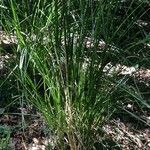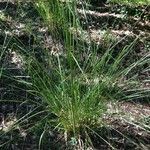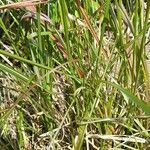| Therapeutic use
|
Amenorrhea (root), Anemia (root), Antipyretics (root), Appetite stimulants (root), Asthma (root), Astringents (root), Colic (root), Colitis (root), Diarrhea (root), Dysmenorrhea (root), Dyspepsia (root), Disorder of ejaculation (root), Erysipelas (root), Fever (root), Flatulence (root), Gout (root), Helminthiasis (root), Hematologic diseases (root), Hemoptysis (root), Menstruation-inducing agents (root), Parasympatholytics (root), General tonic for rejuvenation (root), Skin diseases (root), Urination disorders (root), Vomiting (root), Diaphoretic (root), Cooling effect on body (root), Antidote(Scorpion)(Veterinary) (unspecified), Boil(Veterinary) (unspecified), Burn(Veterinary) (unspecified), Carminative(Veterinary) (unspecified), Colic(Veterinary) (unspecified), Diaphoretic(Veterinary) (unspecified), Diuretic(Veterinary) (unspecified), Emmenagogue(Veterinary) (unspecified), Expectorant(Veterinary) (unspecified), Fever(Veterinary) (unspecified), Hepatitis(Veterinary) (unspecified), Repellant(Insect) (unspecified), Malaria(Veterinary) (unspecified), Mouth(Veterinary) (unspecified), Nausea(Veterinary) (unspecified), Perfume(Veterinary) (unspecified), Pleurisy(Veterinary) (unspecified), Refrigerant(Veterinary) (unspecified), Spasm(Veterinary) (unspecified), Sprain(Veterinary) (unspecified), Stimulant(Veterinary) (unspecified), Stomachic(Veterinary) (unspecified), Sudorific(Veterinary) (unspecified), Vermifuge(Veterinary) (unspecified), Yellow Fever(Veterinary) (unspecified), Bite(Snake)(Veterinary) (unspecified), Cosmetic (unspecified), Epilepsy(Veterinary) (unspecified), Flu(Veterinary) (unspecified), Repellant(Insect)(Veterinary) (unspecified), Parasiticide(Veterinary) (unspecified), Sore(Veterinary) (unspecified), Swelling(Veterinary) (unspecified), Tumor(Abdomen)(Veterinary) (unspecified), Cosmetic(Veterinary) (unspecified), Excitant(Veterinary) (unspecified), Parturition (unspecified), Rheumatism(Veterinary) (unspecified), Stomatitis(Veterinary) (unspecified), Detersive(Veterinary) (unspecified), Lumbago(Veterinary) (unspecified), Soap(Veterinary) (unspecified), Tonic(Veterinary) (unspecified), Amenorrhea (unspecified), Anemia (unspecified), Anthelmintics (unspecified), Anti-bacterial agents (unspecified), Antiemetics (unspecified), Antifungal agents (unspecified), Antipyretics (unspecified), Appetite stimulants (unspecified), Asthenia (unspecified), Asthma (unspecified), Astringents (unspecified), Colic (unspecified), Cough (unspecified), Dementia (unspecified), Diarrhea (unspecified), Diuretics (unspecified), Dysmenorrhea (unspecified), Dyspepsia (unspecified), Disorder of ejaculation (unspecified), Emaciation (unspecified), Erysipelas (unspecified), Expectorants (unspecified), Flatulence (unspecified), Gout (unspecified), Halitosis (unspecified), Headache (unspecified), Heart diseases (unspecified), Helminthiasis (unspecified), Hematinics (unspecified), Hemoptysis (unspecified), Hemorrhage (unspecified), Hemostasis (unspecified), Hiccup (unspecified), Hyperhidrosis (unspecified), Hysteria (unspecified), Infection (unspecified), Jaundice (unspecified), Low back pain (unspecified), Menstruation-inducing agents (unspecified), Nausea (unspecified), Pain (unspecified), Parasympatholytics (unspecified), Skin diseases (unspecified), Sleep initiation and maintenance disorders (unspecified), Spasm (unspecified), Sprains and strains (unspecified), Thirst (unspecified), Ulcer (unspecified), Urination disorders (unspecified), Vomiting (unspecified), Diaphoretic (unspecified), Cooling effect on body (unspecified)
|



